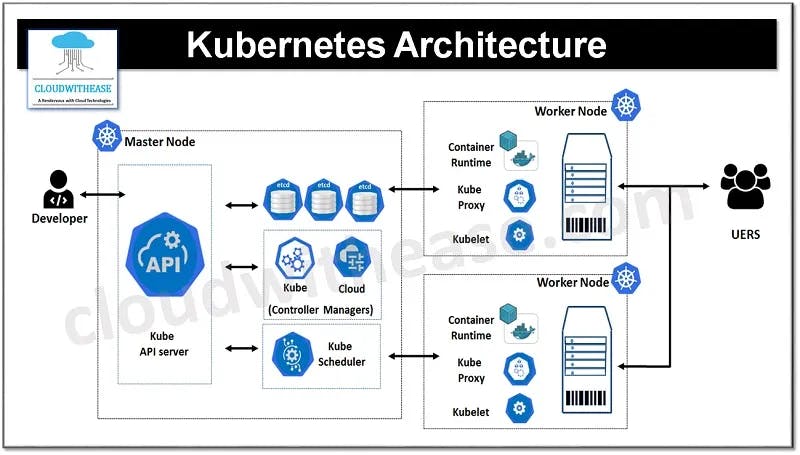Microservices and Kubernetes.
Where containers thrive and scalability knows no bounds.
Have ever contemplated while creating one application, How can this application reach to a larger audience, how can my application be useful and have a really smooth user experience without crashing its whole server all together when many users will be using it...have you ever envisioned how the apps that we use in a day to day basis in our life actually works like:
Netflix
Amazon
Uber
How do they manage to control and scale such huge volume of user loads each and everyday without crashing down their whole application server, how do they manage to do so?
Well its because of MICROSERVICES
Microservices allow each service to scale independently based on demand. When user loads increase, you can scale specific microservices horizontally by adding more instances or containers, ensuring that only the necessary parts of your system are scaled.
Everything is clear and correct so far. Now, you might be wondering how Kubernetes fits into this picture. As I mentioned, in a microservices architecture, effective container management is crucial. Containers are essentially small-scale servers that we deploy and manage within our local environment, created with the assistance of Docker containerization. Kubernetes comes into play as a robust orchestration platform designed to automate the deployment, scaling, and management of these containers, ensuring that your application can efficiently handle varying workloads and provide a smooth user experience without server crashes.
Is Kubernetes only act as an orchestration platform?
No, Kubernetes is not just an orchestration platform; it offers a comprehensive set of features and functionalities beyond orchestration. Here are some key roles and capabilities of Kubernetes:
Orchestration: Kubernetes excels at container orchestration, automating the deployment, scaling, and management of containerized applications across clusters of machines.
Service Discovery and Load Balancing: Kubernetes provides built-in mechanisms for service discovery and load balancing, ensuring that traffic is routed efficiently to the appropriate containers or services.
Self-Healing: Kubernetes monitors the health of containers and can automatically restart or replace containers that fail, helping to ensure high availability and reliability of applications.
Storage Orchestration: Kubernetes offers storage orchestration, allowing you to dynamically provision and manage storage volumes for your containers.
Automated Rollouts and Rollbacks: Kubernetes supports automated rollouts and rollbacks of application updates, making it easier to manage and update applications with zero downtime.
Configuration Management: Kubernetes enables you to manage application configurations and secrets, helping to keep sensitive information secure and easily accessible to your containers.
Horizontal Scaling: Kubernetes supports horizontal scaling of applications, allowing you to add or remove instances of containers based on demand to optimize resource usage.
Resource Management: Kubernetes provides resource management capabilities, allowing you to allocate and manage CPU, memory, and other resources effectively across your containers and nodes.
Brief Introduction about Kubernetes Cluster Architecture :
Kubernetes cluster architecture consists of: Nodes:
Worker Node : A component in a Kubernetes cluster responsible for running containers and executing workloads.
Master Node : The control plane of a Kubernetes cluster, managing and coordinating worker nodes and their resources.
Worker Node components:
Kubelet : The agent running on each worker node, responsible for managing containers, executing commands, and reporting node health.
Kube-proxy: A network proxy that maintains network rules and facilitates communication between services and pods across the cluster.
Container runtime Interface: A standardized interface allowing Kubernetes to integrate with various container runtimes like Docker , CRI-O etc.
Master Node Components :
API server : The central management point that exposes the Kubernetes API, enabling control and management of the cluster
Controller Manager : Manages controllers responsible for maintaining cluster state, handling workload replication, scaling, and other tasks.
Scheduler : Assigns workloads (pods) to nodes based on resource availability, workload requirements, and scheduling policies.
etcd : A distributed key-value store storing cluster state and configuration, essential for maintaining cluster consistency and resilience.
Networking components (Pods, Services, Ingress): Responsible for networking within the cluster, including managing IP addresses, routing, and load balancing for pods and services.
Storage mechanisms (Volumes) : Handles persistent storage needs within the cluster, providing volumes that can be attached to pods for data storage and retrieval.

In conclusion, Kubernetes is a powerful container orchestration platform that simplifies the deployment, management, and scaling of containerized applications. It provides a robust ecosystem of components that work together to create and manage container clusters efficiently. For beginners, understanding the key concepts such as pods, deployments, services, nodes, and the master node control plane is crucial. Learning how to interact with the Kubernetes API, use kubectl commands, and configure YAML manifests is fundamental for deploying and managing applications in Kubernetes. As users gain experience, they can delve deeper into advanced topics like networking, storage, security, and cluster monitoring to build and operate scalable, resilient, and secure containerized environments. Continuous learning and hands-on practice are essential for mastering Kubernetes and harnessing its full potential in modern application deployment workflows.
For More Details about Kubernetes you can visit:
https://kubernetes.io/docs/home/
A very useful video that i have watched myself to get a clear outlook of every topic discussed above :-
I hope you found this blog insightful and helpful in your journey to understanding Kubernetes. Follow for more such informative content and let's explore the world of container orchestration together! :)

